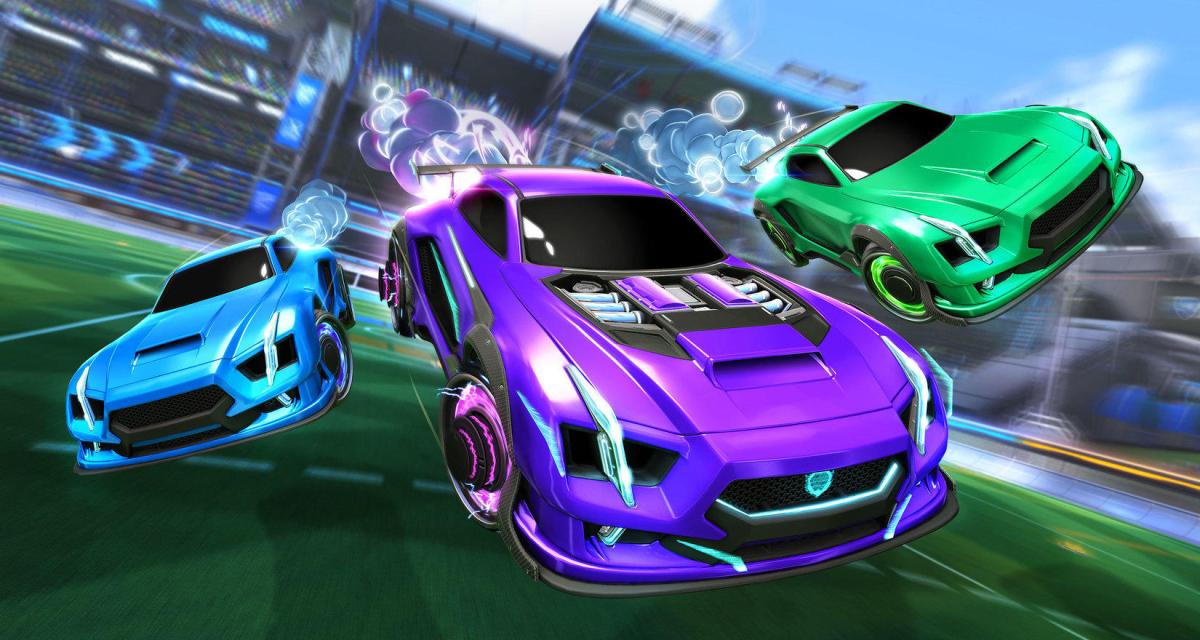This microtransaction has a lot more bang for your buck
Psyonix has finally implemented the long-awaited Rocket Pass, which is a sort of event subscription for earning cosmetic items through gameplay. The closest analog is probably Fortnite‘s Battle Pass. It’s Rocket League‘s way of making level progression matter again.
It’s also the newest form of microtransaction (even if it is stretching the term a bit). The Rocket Pass premium track costs 10 keys, which is generally accepted to be worth $10. That’s $10 for access to a nearly-three-month-long beefed-up progression system that doles out items relatively frequently. There’s one new item for each tier hit. The premium track’s 50 percent XP bonus means that it takes approximately 45 minutes to reach a new tier.
However, there’s an interesting caveat at the end of the premium track. Psyonix has created 70 rewards, one for each of the 70 tiers. It technically stretches to infinity, though. Once past tier 70, the game dishes out a painted or certified (or sometimes both) variant of an item that was already earned. For instance, tier 58 has standard Troublemaker IV wheels; tier 71 has a chance at dropping crimson-painted Troublemaker IV wheels.
The latter is significantly more sought-after by the type of people who care about Rocket League cosmetics. Those are the same folks who spend money on the crate system, which was previously the sole form of microtransactions in Rocket League. Psyonix revealed crate drop rates back in July, and it shed light on exactly how rarely good items come along. Those Troublemaker IV wheels would be classified as Exotics, meaning they have a 4 percent drop rate out of a crate. Anyone lucky enough to get them would then have a 25 percent chance that they’re painted 1 of 13 colors. Those odds aren’t great.
The Rocket Pass guarantees far better odds. Rocket League pro Rizzo released a video (embedded above) where he pays to level up the Rocket Pass. With the premium discount, it costs $40 to jump 30 tiers (although there are also smaller quantities available for less money). Once he gets past tier 70, it’s ostensibly a crate opening. He has a 50 percent chance of getting a painted item, and nearly everything rivals the better stuff that would come in a crate. Rizzo ends up with six painted goal explosions, including a Titanium White one. He spends a lot of money in the interest of making a YouTube video, but he comes away with a good haul.
It feels as if Psyonix may have painted (ha!) itself in a corner to some extent. Anyone who has opened crates knows how much worthless junk comes out of them. Everyone goes through their share of decals they’d never use on cars they’d never drive. It takes a lot of luck and money to get to the good stuff. Some people will spend cash on Rocket Pass and crates, and that’s perfectly fine. But for the ones who just want to deck their inventory out in some cool cosmetics, the Rocket Pass undoubtedly offers a better return on investment.
Of course, it’s not enough to turn the whole economy on its head. The killer items that get pulled from crates will have more value (or retain their value) simply because they’re tougher to get. That Titanium White explosion won’t be worth as much because more players will have it. That’s elementary supply and demand. However, Rocket Pass’ structure kind of makes it inevitable that some people will fall out of love with the crate system. Then again, Psyonix probably doesn’t care a whole lot about where players are spending money, just that they’re spending it somewhere.





Published: Sep 6, 2018 12:00 pm